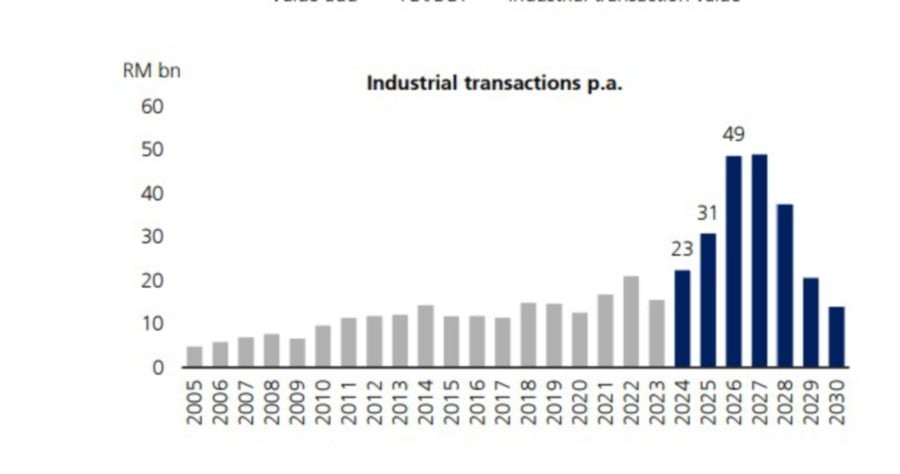SELANGOR is pulling out all the stops in showcasing the best the state has to offer investors.
To this end, the 7th Selangor Asean Business Conference (SABC 2023) and 7th Selangor International Business Summit (SIBC 2023) were held on Thursday.
The SABC 2023 saw leading economic thinkers and captains of industry from around the world coming together to discuss the opportunities in Asean and Selangor’s pivotal role as the most competitive gateway to Asean markets.
“With global giants like Nestle, IKEA, Airbus and Toyota calling Selangor home, we are a magnet for both domestic and foreign investments,” said Menteri Besar Datuk Seri Amirudin Shari in his keynote address at SABC 2023.
He believed that Selangor could develop its own tech companies and explore the fields of digital education, healthcare predictive analysis, renewable energy, fintech (financial technology)-as-a-service and efficient logistics.
“That is why Selangor is committed to hosting SABC. It is not limited to building connections. We see great opportunities to discuss ideas and develop strategies in these areas. Beyond just building connections and linkages, we want to increase collaboration within Asean.
“At SABC, we want to discuss strategies and ideas that can bring us closer and explore synergies,” Amirudin added.
With Selangor accounting for 25.5 per cent of the national gross domestic product (GDP), the state was the ideal entry point into the Southeast Asian market, he added.
Meanwhile, SIBS, initiated by the Selangor government and organised by Invest Selangor, is a premier annual business event connecting brands and innovators to opportunities in Malaysia and the regional markets.
The four-day event, with 1,006 booths, is expected to yield substantial business transactions to the tune of RM1.5 billion and attract 50,000 visitors.
Amirudin said he hoped to see transactions achieved through the Selangor International Food and Beverage Expo, the Selangor International Medical Expo, the new Selangor Industrial Park Expo (SPARK) and the Selangor Research, Development, and Innovation Expo.
With a total of 328 trade buyers from 26 countries, in addition to trade visitors and other delegations, SIBS 2023 aims to further strengthen its international reputation as the premier regional event for businesses seeking to build and expand their presence in Southeast Asia, with Selangor as the gateway.
“We want high-quality investment in line with the current industries that we have identified, be it in public transportation or climate change solutions, higher quality manufacturing especially using automation, new fields in biotechnology and pharmaceuticals to prepare for the next endemic or pandemic.
“It is clear that the business of investment isn’t solely based on the past. That is why I made it crystal clear to my whole team in Selangor that while we have done well, we cannot take things for granted or be complacent by hoping that our past successes can guarantee success in the future,” he said at the SIB 2023 opening ceremony.
Amirudin said Invest Selangor would collaborate with the federal government to facilitate the construction of a third seaport on Carey Island, with the aim of bolstering cargo-handling capacity and boosting economic prospects.
Under the First Selangor Plan launched in August last year, three key areas for development were identified, he said.
In the south of Selangor, the Integrated Development Region in South Selangor offers more than 16,187ha for development through industrial parks.
In the north, the Sabak Bernam Development Area presents opportunities in eco-tourism, smart farming and logistics to enhance food security for Selangor and Malaysia.
Additionally, the Selangor Maritime Gateway Economic Development Zone along Sungai Klang taps the economic potential of Selangor’s primary river while harnessing it as a new water source.
Amirudin said the First Selangor Plan had sustainability as its core.
It emphasised the importance of addressing the threats of climate change while creating higher-paying jobs, he said.
“Selangor is the best place for you to put your money because we have the necessary ingredients to succeed as we truly believe no one should be left behind.
“I am confident that this summit will be an opportunity to discover new areas, whether in innovation or technology, and your investment will be instrumental for allowing our young people to have a brighter future,” Amirudin said.
Last year, Selangor achieved a an 11.9 per cent GDP growth to RM384.9 billion.
State Investment, Trade and Mobility executive councillor Ng Sze Han said there were boundless opportunities for mutual growth and shared success within Selangor and Asean.
“Together, we can chart a prosperous future, where innovation, collaboration, and determination pave the way for a brighter tomorrow,” he said in his speech.
Additionally, Invest Selangor has started a collaboration with other investment promotion agencies in Malaysia and other Asean countries to promote their industrial parks.
“This reaffirms SIBS as the only industrial park expo in this region,” said Ng.
Source: NST
Selangor woos investors
Content Type:
Duration:



